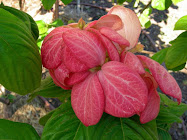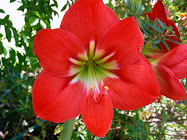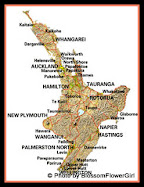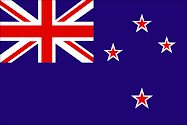Sunday 7 January
The famous Haka
And finally, came the pièce de résistance - the Haka! This was what I wanted to see more than anything and it was the highlight of the evening.
The Haka
Sitting just a few feet away from these huge blokes all decked out with tattoos and traditional Māori dress, waving their arms, ferocious scowls on their faces, chanting and yelling loudly in the middle of a forest, pitch black is quite an experience, let me tell you. I mean, I knew it was a concert, and I knew we were all safe and happy, but...I wouldn't like to have been their enemy in olden times.
Watch the Haka
The Battle Haka
The peruperu is characterised by leaps during which the legs are pressed under the body. In former times, the peruperu was performed before a battle in order to invoke the god of war and to discourage and frighten the enemy. It involved fierce facial expressions and grimaces, poking out of the tongue, eye bulging, grunts and cries, and the waving of weapons. If the haka was not performed in total unison, this was regarded as a bad omen for the battle. Often, warriors went naked into battle, apart from a plaited flax belt around the waist. The aim of the warriors was to kill all the members of the enemy war party, so that no survivors would remain to undertake revenge.
The Origin of Ka Mate
The most well know Haka is the Ka Mate. In the early 1800's, a chief by the name of Te Rauparaha composed Ka Mate, the most well known of all haka. He was chief of the Ngati Toarangatira (Ngati-Toa) a branch of the Tainui tribe, and dwelt in Kawhia, north of the Waikato. There were inter-tribal wars - a bitter story of constant skirmish, reprisal and territorial dispute.
Ka mate, ka mate
Ka ora, ka ora
Tenei te tangata puhuruhuru
Nana i tiki mai whakawhiti te ra
Upane, upane
Upane kaupane
Whiti te ra.
These words are translated as:
It is death, it is death
It is life, it is life
This is the hairy man
Who caused the sun to shine again for me
Up the ladder, up the ladder
Up to the top
The sun shines.
This is the Haka as performed by the All Blacks.
A word on pronunciation
The 'wh' is pronounced as an 'f' or 'ph'.
The 'e' on the end of a word is sounded as if the word ended in 'ay' as in 'hay'.
The 'au' is pronounced as the 'ou' in 'hour'.
The 'u's are all long like 'ou' in 'you'.
The 'a's are all sounded long as in 'ah'
Kia Ora!
Tēnā koutou katoa
This is all about New Zealand - Aotearoa - and the time I spent there. Magical times, beautiful scenery, gushing geysers, thermal wonderlands. Hear about Waitangi Day, discover the meaning of the word "Aotearoa", see the Glaciers, read about hangis and Hakas, and visit the beautiful Bay of Islands. So come with me on a journey - a journey to The Land of The Long White Cloud.
Kia ora
CHRISTCHURCH EARTHQUAKE TRIBUTE 2011
Kia ora
Watch The Haka
Subscribe to:
Post Comments (Atom)








No comments:
Post a Comment